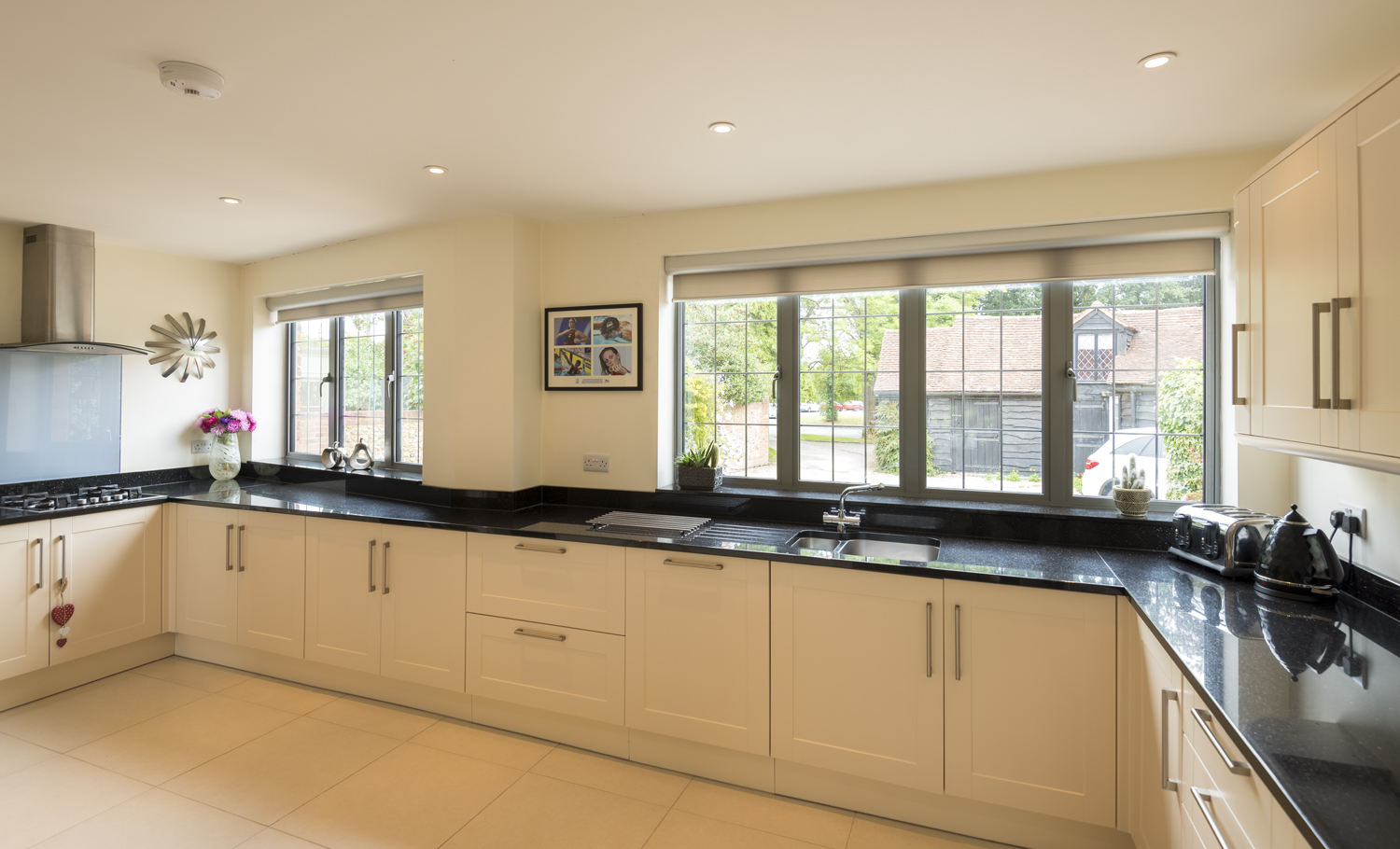With so many types of windows available on the market today, including varying materials, sizes and configurations, it can be difficult knowing how best to dress your window. Whether you’re completing a kitchen extension and want to know more about what window dressing options are available, or simply replacing old windows looking for inspiration, then this article is for you. We’ve been actively participating in conversations on Houzz on how to best dress your kitchen windows, and here’s what you guys have been asking about.
For inspiration on how to dress your windows, why not browse through our window case studies? From Bay to Gable to Casement Windows, we have a beautiful showcase from hundreds of homes across the UK to inspire you.
Window Types
How to dress Casement Windows
When looking for ways to dress casement windows in your kitchen, you should first consider how the window is going to operate. You’re likely to open and close a kitchen window frequently for ventilation, so choosing curtains or blinds that are easy to draw back or pull up to keep out of the way might be the better choice when dressing casement windows. Quite often, casement windows found in the kitchen aren’t dressed at all, which helps to keep the kitchen bright and airy.

How to dress Bay Windows
If you have a bay window in your kitchen area then you most likely live in a traditional style Victorian home and want to accentuate the rustic charm of your property. Made-to-measure roller blinds give a nice neat and tidy finish, as do Roman blinds and shutters, which are common treatments for kitchen bay windows. Alternatively, if your bay window is away from any open flames or appliances then curtains will keep your kitchen space warmer in the colder months and add a luxurious look to your kitchen/dining area.

How to dress Fixed Windows
Large fixed windows are often left undressed as their purpose is to increase the amount of natural light in the home. However, blinds can be installed to block out light and increase privacy when you need it. If you have an open plan kitchen living room then blinds can be especially useful for those movie nights when you need to block out the light. Blinds can also complement the modern, sleek appearance of the windows. Alternatively, two boldly coloured drapes can be used to turn the windows into a feature, or one very neutral, light voile will blend with a light and airy interior style.

How to dress Gable Windows
One of the top reasons why people install a gable window is to enhance the amount of natural light in their home in a very impressive design. And, as gable windows are typically installed high up, normally above existing doors or windows, they don’t require dressing as the need for privacy is eradicated. However, dressing a configuration like the one below, which combines a gable window with bi-fold doors, requires some thought. Electric blind systems tend to be the best window treatment for gable windows as it’s easy to operate and can be designed to fit the window measurements. Alternatively, shutters and curtains can be installed and drawn back for a luxurious feel. If you opt for electric blinds then consider how you will clean the blinds and fix them should they malfunction.

How to dress French Windows
When considering how to dress French Windows in your kitchen, it’s important to consider the size and shape of the window. For example, for rectangular shaped French Windows, valances would complement the elegant style of the window and help to elongate the room. For smaller French windows, French internal shutters keep the operation of the window simple and easy, also helping to create the illusion of a larger window when folded back.

Materials for window dressings
Whatever window style you have in your kitchen, you’ll need to make sure that your kitchen window dressings can cope with humidity and doesn’t absorb smells that come from cooking.
Cotton, linen and wool make for the best kitchen window treatments since they are breathable fabrics that can be easily cleaned and maintained. Fabrics that should be avoided due to being susceptible to odour absorption include nylon, polyester and velvet.
Hygiene and safety factors should also be considered when choosing fabrics. Mildew-resistant fabrics ideal for the kitchen include cotton and linen. If left to fester, Mildew can be harmful to your health, so it is important that it is kept away from your kitchen. In terms of safety, highly flammable fabrics such as nylon and polyester should be avoided. By opting for a fabric with fire resistant fibres woven in or by using a fire-resistant coating on your fabric, your window dressings will be safer in the unlikely event of a kitchen fire.
Wooden blinds should also be avoided since they can warp and crack over time in humid conditions. Faux wood blinds that give the contemporary, natural look of real wood are available and are much better suited to the kitchen environment.















